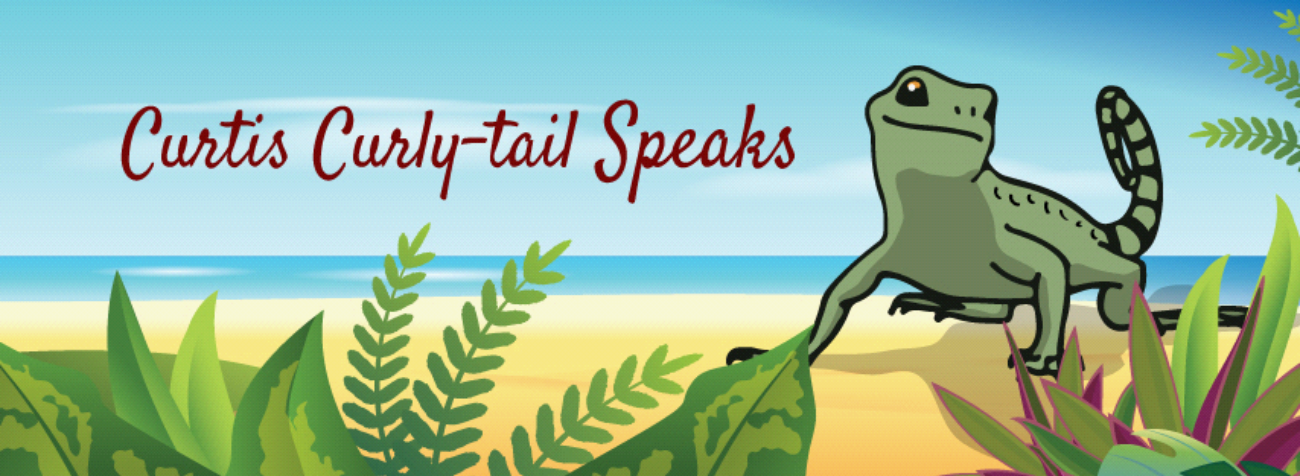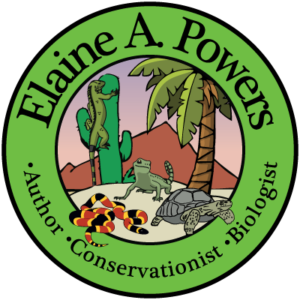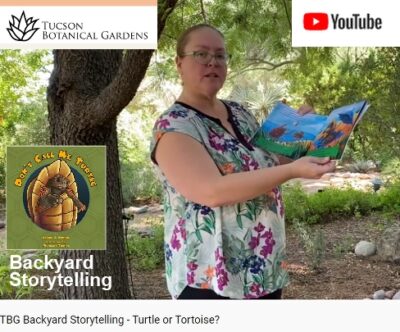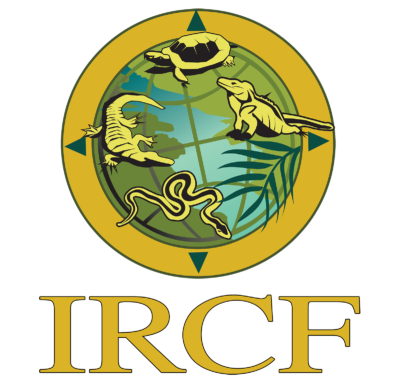A Cacti Walk to Remember
I’m pet-sitting a dog for a friend. I’ve never had a dog, so I am definitely learning new things. One of them is that I have to walk this animal…a lot. I’ve never had to do that with my reptiles. The tortoises I can let out into the backyard and they walk themselves. However, I’ve discovered there are definite positives to having to walk a dog. I now see the details of my neighborhood that I have missed by driving by. I’ve seen the “big” picture, but not the details. Walking has allowed me to see more, much more.
These Are the Plants in my Neighborhood
Amazingly, I’ve discovered some Sonoran desert plants I didn’t know about previously. Using the iNaturalist app on my phone, I think I have identified them. According to the app they are kinds of cholla cacti. I was surprised since this is the species of cholla that I know and fear, the teddy bear cholla, Cylindropuntia bigelovii.
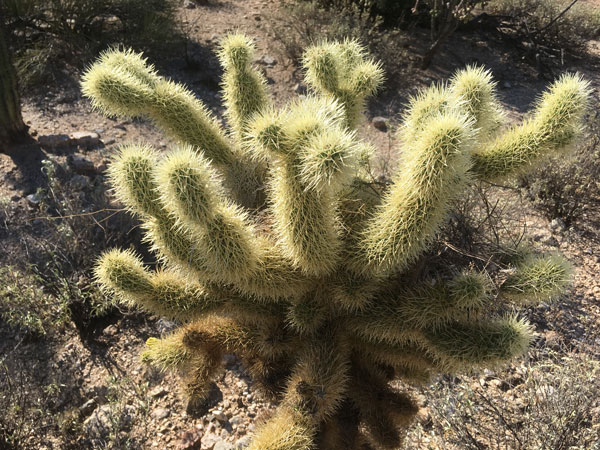
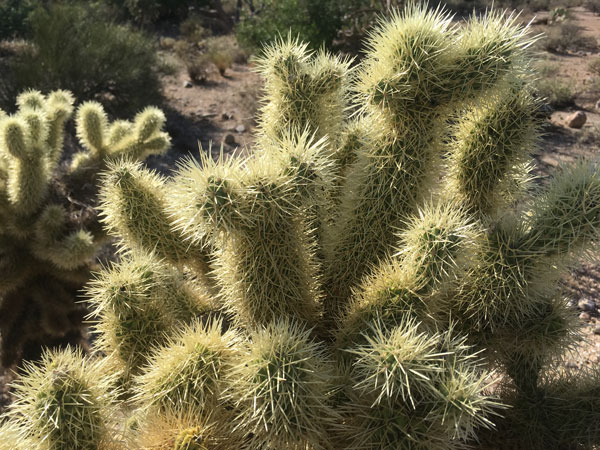
Cholla cacti has tiny harpoon spines that justifiably terrify humans, but it is an important plant in the desert ecosystem. It’s used by cactus wrens for nesting and its fruits are eaten by various animals.
So, I was surprised when the following two plants turned out to be members of the cholla family. They didn’t have that fuzzy appearance that makes you want to hold the cactus (resist!). Touching a teddy bear cholla is a very bad mistake, requiring extensive medical attention.
The first of my new cholla does not look threatening. As a matter of fact, there is a distinct lack of spines on this one.
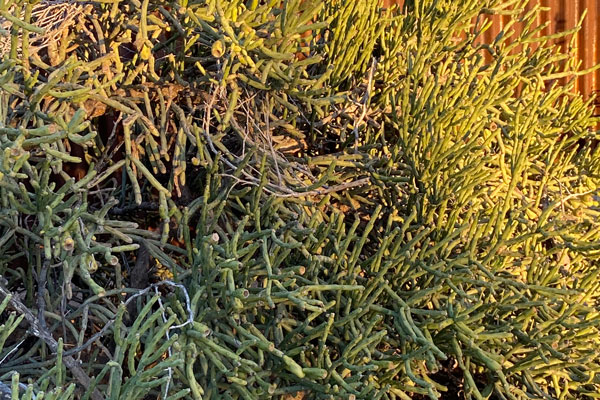
I suspect the identification of this bush being an Arizona Pencil Cholla, Cylindropuntia arbuscula, is correct. This cholla is only found in Arizona, ranging from Phoenix to the Mexico border. The stems are light green and this cactus bears spineless green fruit. And the stems have far fewer spines.
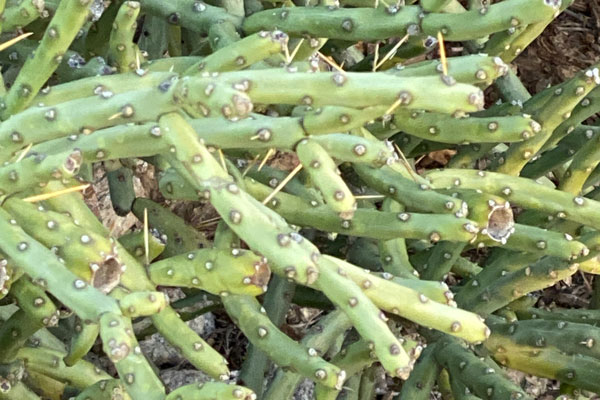
As I turned up the street, heading back home, I came across this second interesting plant.
This one is probably the Chain-fruit Cholla, Cylindropuntia fulgida. This cactus has a “braided” look, more knobby than the other two. The Pencil cholla had a few fruits, but the Chain-fruit seems to be loaded with fruit. This cholla is more widespread, found in the Sonoran and Chihuahuan Deserts. The fruit is pear-shaped and can stay attached for many years. New flowers bloom on them each year and the chains grow longer, giving the plant its common name.
You may have heard of the famous “jumping cholla.” That’s the other name for C. fulgida. The segments break off when brushed against, sticking to the passing animal. These easily detached segments appear to have “jumped.” This allows the plant to disperse and propagate. These stem pieces grow roots and may be the primary way to grow new plants.
Of course, the fruit of this cholla is also consumed by local wildlife.
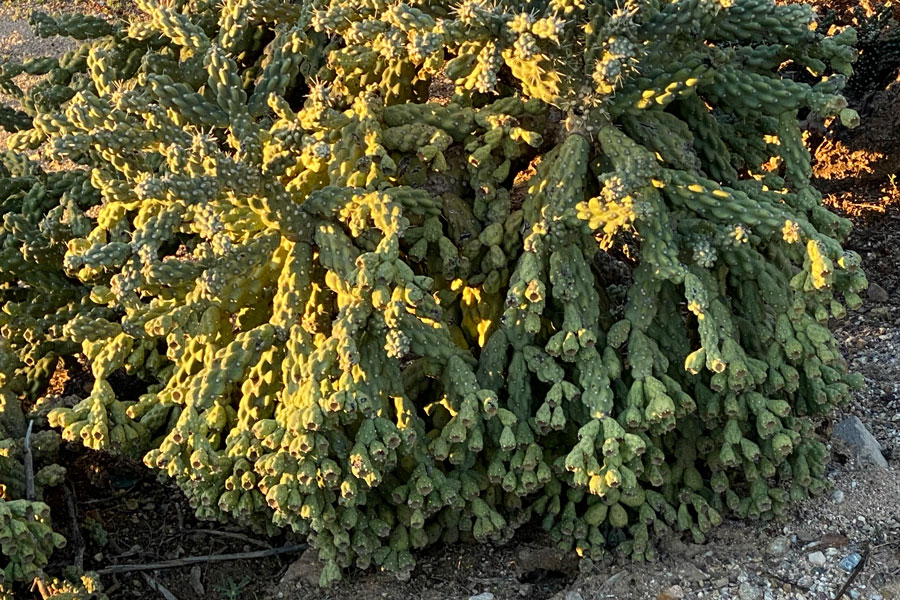
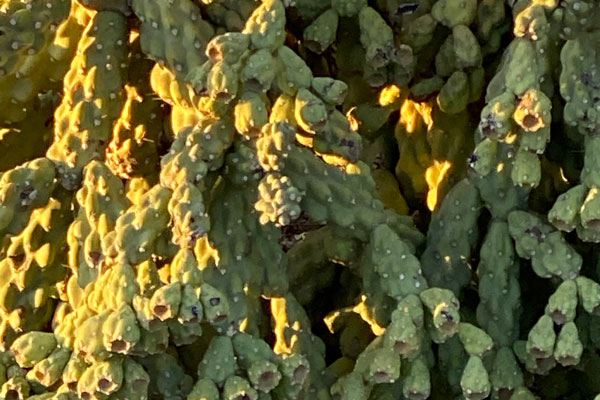
I will continue to observe the plants as I walk by and share my findings with you. Sadly, some of the other plants I’ve found are invasive. But for now, enjoy these diverse kinds of cholla. Each one of them has a special place in the Sonoran desert ecosystem. Even though they overlap their territories, they all thrive and provide an important piece of the desert puzzle.
If you are interested in learning more about ecosystems of the desert and beyond, check out my science-based workbooks! They are tons of fun and can be downloaded in minutes.
To learn about our latest science-based children’s books and workbooks, to read our latest blog posts about reptiles, birds, cats, and gardening, in a variety of locations, and about how the books come to be, what inspires an author to write, and many more interesting aspects of the publishing business, fill in the box below and we will add you to our email list.
Thank you!
